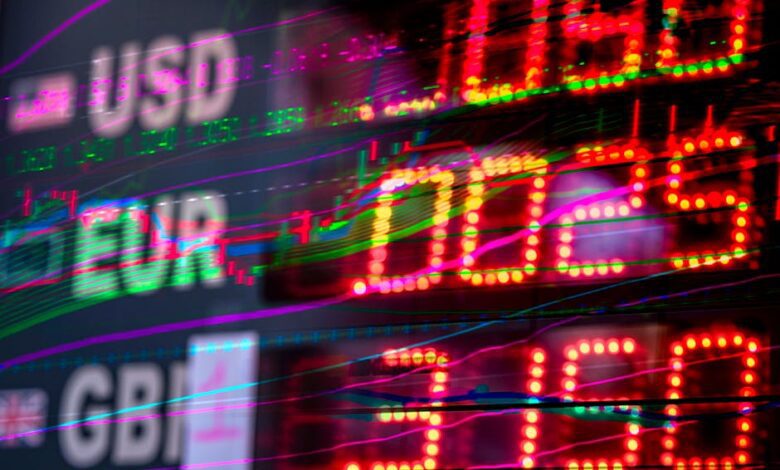Forex Dynamics: Understanding Currency Fluctuations Through Interest Rates, Geopolitics, and Central Bank Policies

In the dynamic world of foreign exchange (forex) trading, understanding the intricate factors that influence currency values is essential for both novice and seasoned traders. This article delves into the multifaceted relationship between interest rates and currency exchange rates, exploring how fluctuations in rates can shape global markets. We will examine the significant role that geopolitical events play in driving volatility within forex markets, as well as the strategies traders employ to capitalize on major currency pairs like EUR/USD and GBP/USD. Additionally, we will highlight the critical influence of central banks in determining currency values, the impact of inflation on trading strategies, and the concept of carry trading, which allows traders to profit from interest rate differentials. With the rise of digital currencies, we will also consider their implications for traditional forex markets and discuss how to effectively utilize economic indicators to predict currency movements. Join us as we unravel these essential components of forex trading and equip yourself with the knowledge to navigate this ever-evolving landscape.
- 1. **Interest Rates and Currency Exchange: Unraveling the Connection**
- 2. **Geopolitical Events and Forex Markets: Navigating Uncertainty**
- 3. **Central Banks and Currency Value: The Power Behind the Scenes**
1. **Interest Rates and Currency Exchange: Unraveling the Connection**
Interest rates play a crucial role in determining currency exchange rates, as they reflect the cost of borrowing money and the return on investments in a particular country. When a central bank raises interest rates, it typically attracts foreign capital seeking higher returns, leading to an appreciation of the national currency. Conversely, when interest rates are lowered, capital may flow out, causing the currency to depreciate.
The relationship between interest rates and exchange rates can be explained through the lens of the interest rate parity theory. This theory posits that the difference in interest rates between two countries will be reflected in the forward exchange rates. For example, if the United States increases its interest rates while those of the Eurozone remain unchanged, investors may favor U.S. assets, driving up demand for the U.S. dollar relative to the euro. As a result, the dollar appreciates against the euro.
Moreover, interest rates are often perceived as indicators of a country’s economic health. Higher interest rates can signal robust economic growth, which can further bolster a currency's value. Conversely, persistently low rates may indicate economic stagnation, leading to decreased confidence in the currency.
In the context of forex trading, understanding the interplay between interest rates and currency values is vital for developing effective trading strategies. Traders closely monitor central bank announcements, economic indicators, and market sentiment to anticipate interest rate changes and their potential impact on exchange rates. By leveraging this information, traders can position themselves to take advantage of movements in major currency pairs like EUR/USD and GBP/USD, ultimately enhancing their trading outcomes.
2. **Geopolitical Events and Forex Markets: Navigating Uncertainty**
Geopolitical events significantly influence forex markets by creating uncertainty and volatility, which traders must navigate to make informed decisions. Events such as elections, military conflicts, trade negotiations, and diplomatic relations can lead to rapid shifts in currency values. For instance, political instability in a country often results in a depreciation of its currency, as investors seek safer assets.
Market reactions to geopolitical developments are frequently driven by the perceived risk associated with the event. For example, heightened tensions between nations may lead to a flight to safety, resulting in stronger demand for currencies like the US dollar or Swiss franc. Conversely, positive developments, such as successful trade deals or peaceful resolutions to conflicts, can boost investor confidence, strengthening the currencies of the nations involved.
Traders often employ various strategies to mitigate risks associated with geopolitical events. One common approach is to diversify their portfolios, spreading exposure across different currencies to reduce vulnerability to any single event. Additionally, using options and futures contracts can help hedge against potential losses during periods of heightened uncertainty.
Moreover, it is essential to stay informed about global news and forecasts, as these can provide valuable insights into potential market movements. The ability to analyze the implications of geopolitical events on economic fundamentals enables traders to make more educated predictions about currency fluctuations, ultimately enhancing their trading strategies in an unpredictable landscape.
3. **Central Banks and Currency Value: The Power Behind the Scenes**
Central banks play a crucial role in shaping currency values through their monetary policy decisions, which directly influence interest rates, inflation, and economic stability. By adjusting the benchmark interest rates, central banks can either encourage borrowing and spending or curb excessive inflation, thereby impacting the supply and demand for their currency in the foreign exchange (forex) market.
When a central bank raises interest rates, it typically leads to an appreciation of the national currency. Higher interest rates offer better returns on investments denominated in that currency, attracting foreign capital and increasing demand. Conversely, when rates are lowered, the currency may depreciate as investors seek higher yields elsewhere.
Central banks also use various tools, such as open market operations, to regulate money supply and influence currency value. For example, purchasing government securities injects liquidity into the economy, potentially leading to currency depreciation if not matched by economic growth. Additionally, forward guidance—where central banks communicate future policy intentions—can shape market expectations and ultimately affect currency movements.
Geopolitical events can amplify or dampen the effects of central bank actions. For instance, political instability or economic uncertainty may lead to heightened volatility in the forex market, regardless of monetary policy changes. Consequently, traders and investors closely monitor central bank announcements and economic indicators to gauge future currency trends.
In summary, central banks wield significant power in the forex market through their monetary policy, influencing currency values by manipulating interest rates and managing market expectations. Understanding their actions and the broader economic context is essential for traders seeking to navigate the complexities of currency movements.
In conclusion, the intricate web of factors influencing currency exchange rates underscores the complexity and dynamism of the forex market. As we have explored, interest rates play a vital role in shaping currency values, with central banks wielding significant power through their monetary policies. Geopolitical events add another layer of unpredictability, often leading to swift market reactions that traders must carefully navigate.
Moreover, understanding inflation's impact on trading strategies is crucial for making informed decisions in a fluctuating economic landscape. The carry trade strategy highlights the opportunities presented by interest rate differentials, allowing traders to capitalize on varying monetary policies across nations.
As digital currencies continue to rise, their influence on traditional forex markets cannot be overlooked, prompting traders to adapt to this evolving environment. Finally, leveraging economic indicators is essential for predicting currency movements and enhancing trading strategies. By synthesizing these elements, traders can better position themselves to navigate the complexities of the forex market, ultimately leading to more informed and effective trading decisions.





